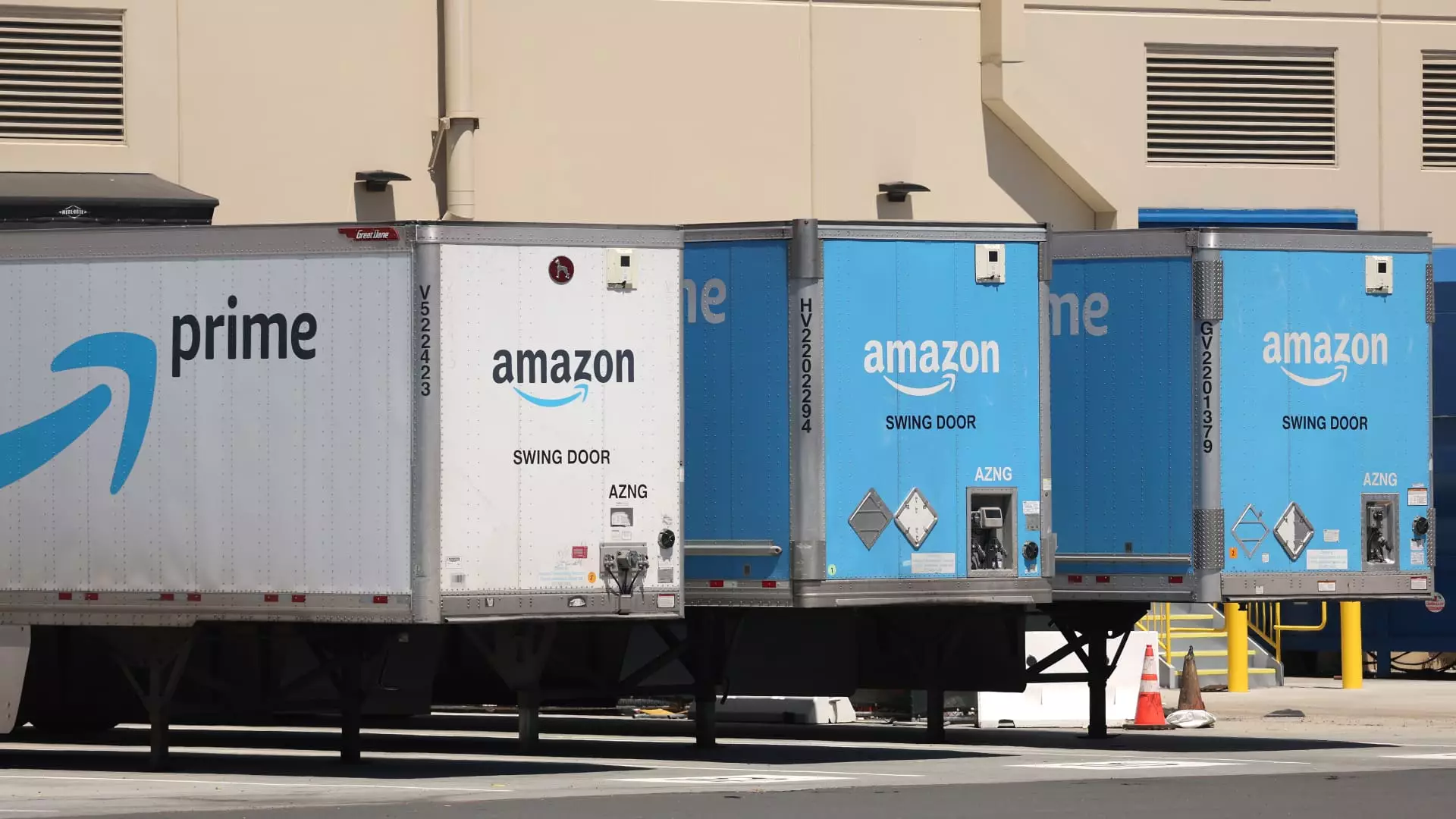In a shocking revelation this week, the United States Department of Justice has filed charges against members of an Armenian organized crime ring, unveiling a meticulously orchestrated scheme that siphoned off over $83 million worth of cargo from Amazon. With brazen audacity, these criminals masqueraded as legitimate truck drivers, effectively exploiting the vulnerabilities of one of the most powerful retail giants in the world. This incident paints a vivid picture of how organized crime is evolving and infiltrating the logistics and e-commerce sectors.
The scheme, allegedly running since 2021, saw operatives stealing truckloads of coveted merchandise. From high-tech smart TVs to kitchen appliances, these goods were not only pilfered but presumably diverted for resale or to be gifted among associates. By assuming the identity of legitimate drivers using the Amazon Relay application, these fraudsters operated under the radar, turning a sophisticated supply chain into an easy target. Their modus operandi showcases a disturbing trend; organized crime is not just about flashy heists anymore; it’s about exploiting technological platforms to execute thefts with alarming precision.
Tackling a Modern Menace
Cargo theft is not merely a nuisance for Amazon—it’s a multi-billion-dollar drain on the industry, with estimates placing annual losses at close to $1 billion. The sheer scale of these thefts raises pertinent questions about security around freight transport. Industry experts note that cargo theft has spiraled beyond the reach of mere logistics companies; it now challenges the very foundations of commerce and trust in a rapidly digitizing marketplace.
Amazon has responded by tightening its grip on monitoring and enforcing the integrity of its operations. The company’s efforts to thwart fraudulent activities highlight the importance of vigilance in the e-commerce space. However, the complexity of the issue means that merely cracking down on suspected sellers or activities isn’t enough. The stakes are high; failure to combat cargo theft can lead to cascading consequences affecting legitimate businesses and the economy as a whole.
The Recipe for Deception: Routes and Routes Away
Central to this criminal endeavor are four transport companies—AK Transportation, NBA Holdings, Belman Transport, and Markos Transportation. These entities were allegedly able to obtain freight contracts via the Amazon Relay app, however, instead of driving their loads directly to Amazon’s locations, they diverted their routes, pilfering merchandise along the way. The DOJ’s investigation reveals a well-planned conspiracy that suggests the crime ring knew the ins and outs of the freight system intimately.
This situation underscores the need for technology firms like Amazon to not only monitor freight routes but also scrutinize carrier legitimacy more rigorously. With the rise of e-commerce, the accompanying risks of advanced theft are evolving. As this incident illustrates, organized crime is adapting, using tools that enhance sophistication while simultaneously creating vulnerabilities for companies that have largely benefitted from technological advancements.
A Joint Fight Against an Increasingly Complex Threat
The collaboration between Amazon and the DOJ marks a significant step in combating this sophisticated crime. By sharing crucial information about the thefts and the individuals involved, Amazon has taken responsibility, acknowledging the shared stakes in curbing these illegal activities. The tech giant has not simply sat back and rolled with the punches; it is proactively forging partnerships that strengthen its defenses against organized crime.
Moreover, the long list of alleged crimes linked to this ring—including attempted murder, kidnapping, and illegal firearm possession—illustrates a far more sinister web of criminality that extends well beyond cargo theft. This case is a stark reminder that organized crime doesn’t operate in silos, and its reach can permeate a variety of societal aspects, demanding a robust, multi-pronged response from law enforcement and the industry alike.
The interface of e-commerce and logistics will continue to be a prime target for criminal enterprises if preventive measures and collective vigilance do not evolve concurrently. As we navigate these turbulent waters, the stakes are undeniably high, but with increased awareness, technological safeguards, and cooperative efforts from companies and law enforcement alike, the battle against organized crime is one that can—and must—be won.


Leave a Reply